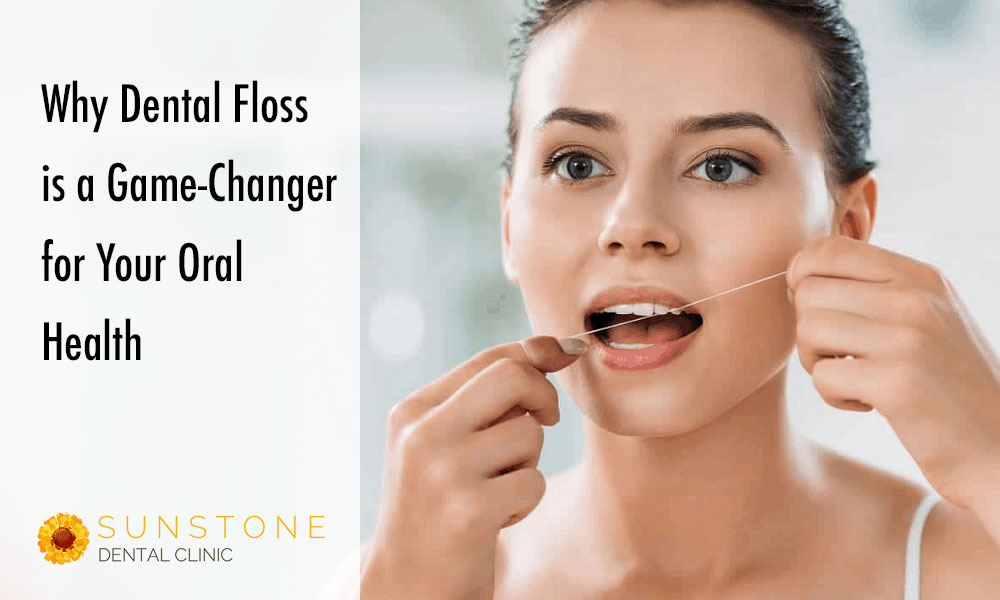Benefits of using dental floss
- Prevents tooth decay: Dental floss reaches areas your toothbrush can’t, removing plaque and food debris that may lead to cavities. Daily flossing significantly reduces the risk of tooth decay and promotes healthier teeth.
- Reduces gum disease risk: Flossing plays a crucial role in preventing gum disease by removing plaque and bacteria from between teeth and along the gumline, addressing this serious condition affecting gums and supporting structures.
- Promotes fresh breath: Bad breath, or halitosis, can result from the accumulation of food particles and bacteria in the mouth. Flossing eliminates these odor-causing substances, resulting in fresher breath and a cleaner mouth.
- Improves gum health: Flossing stimulates the gums, enhancing blood circulation essential for maintaining healthy gum tissue. Regular flossing helps prevent gum inflammation, bleeding, and sensitivity, contributing to stronger and healthier gums.
- Enhances overall oral health: Including dental floss in your daily oral care routine positively impacts overall oral health by removing plaque and minimizing the risk of dental problems, potentially avoiding the need for costly and invasive dental treatments.
How to properly use dental floss
Using dental floss may seem simple, but employing proper techniques ensures effective cleaning. Here’s how to use dental floss correctly:
- Choose the right floss: Select the type of dental floss that suits your needs, whether it’s waxed for easier sliding or unwaxed for tight gaps. Flavored floss is also an option for a more enjoyable experience.
- Start with an adequate length: Cut an approximately 18-inch piece of floss to ensure a clean section between each tooth.
- Hold the floss correctly: Grip the floss tightly between your thumbs and index fingers, leaving a small section for flossing. Use a gentle back-and-forth motion to guide the floss between your teeth, avoiding snapping into your gums.
- Curve the floss around each tooth: When the floss reaches the gumline, curve it around one tooth in a C-shape. Gently slide the floss up and down, following the tooth’s natural curve. Repeat for each tooth, using a clean section of floss each time.
- Don’t forget the back teeth: Ensure thorough cleaning by flossing the back teeth, using a fresh section of floss for each tooth.
- Rinse and dispose: After flossing, rinse your mouth with water to remove loosened debris. Dispose of used floss properly by wrapping it around your fingers and throwing it in the trash.
Following these steps ensures proper use of dental floss and allows you to reap its full benefits.
Types of dental floss
Dental floss comes in various types to accommodate diverse needs and preferences. Here are some common varieties:
- Nylon floss: Widely used, affordable, and available in waxed and unwaxed versions, nylon floss is strong and effective in removing plaque and food particles.
- PTFE floss: Also known as “Glide” floss, PTFE floss is made from polytetrafluoroethylene, a high-tech material. Shred-resistant and easily sliding between teeth, it’s suitable for tight gaps or braces, offering superior convenience and comfort at a higher cost.
- Flavoured floss: Enhancing the flossing experience with pleasant tastes like mint, cinnamon, or berry, flavoured floss is available in both nylon and PTFE varieties.
- Floss picks: Convenient alternatives to traditional floss, floss picks have a short piece of floss on a handle for easy maneuvering between teeth. They are particularly useful for those struggling with traditional flossing or having limited dexterity.
When selecting dental floss, consider your specific needs and preferences. The key is to find a type that ensures consistent use, as regular flossing is crucial for maintaining good oral hygiene.

